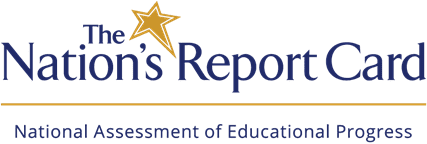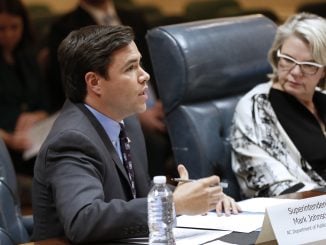
RALEIGH — The release of the latest math and readings scores for fourth and eighth graders by the National Assessment of Educational Progress, or NAEP, reveals the impact of pandemic school closures with historic setbacks in learning both nationwide and in North Carolina.
“We don’t want to be looking in the rearview mirror and regretting not doing this,” North Carolina’s Democratic Gov. Roy Cooper said as he closed the state’s schools on Mar. 14, 2020.
State elected officials in North Carolina had initially agreed on the first round of school closures, but within months those sentiments changed. Cooper, however, would keep schools closed for in-person instruction for almost a year.
The impact of those closures is now seen in this year’s NAEP results as well as reported mental health declines in children.
NAEP tests are often referred to as “The Nation’s Report Card,” and are administered every two years to monitor fourth and eighth-grade student progress in the core subjects of Reading and Math. The NAEP was last given in 2019 and should have been given in 2021 but was postponed a year due to the pandemic.
“Nationally, the average mathematics score for fourth-graders fell five points since 2019 (from 241 to 236), while the score for eighth-graders dropped eight points (from 282 to 274). In reading, average scores for both grades fell three points (from 220 to 217 at fourth grade and from 263 to 260 at eighth grade),” according to the NAEP’s press release.
The 1990s was the last time reading scores were that low in grades four and eight; 1998 and 1992, respectively. The national average fourth-grade math score is the lowest in almost 20 years. For eighth-grade math, the score dropped eight points representing the biggest drop in the history of the assessment.
“The national average score declines in mathematics for fourth- and eighth-graders were the largest ever recorded in that subject,” the NAEP’s press release stated.
The results showed almost four in 10 eighth graders had failed an understanding of basic math concepts.
“These mathematics results are historic,” Peggy Carr, commissioner of the National Center for Education Statistics said in a press release. “This is because they are the largest decline in mathematics we have observed in the entire history of this assessment.”
At a briefing prior to the release of the report, U.S. Education Secretary Miguel Cardona called the results “appalling and unacceptable,” and “a reminder of the impact this pandemic had on our learners and the important work that we must do now for our students.”
Among ethnic subgroups, math scores at both grade levels declined as did scores for male and female students. Achievement gains among ethnicities in North Carolina also took a hit, with the gap between Black and White students now back to 30 points; the lowest level since 1998.
Overall, North Carolina’s results were not statistically different from the average national results.
In math, scores dropped beyond the 20-year lows seen nationally. The fourth-grade score dropped five points from 241 in 2019 to 236 in 2022; its lowest since 2000. The eighth-grade score fell 10 points from 284 in 2019 to 274 in 2020; the lowest since 1996.
Reading scores for North Carolina fourth graders declined five points from 221 in 2019 to 216 in 2020. The percentage of fourth-grade students scoring “below basic” achievement levels in reading hit a 15-year low of 39 percent.
The average reading score for the state’s eighth graders fell seven points from 263 in 2019 to 256 in 2020. Eighth-graders below basic achievement in reading came in at 34 percent, a percentage not seen since 2005.
Nationally, fourth-grade reading scores declined in nine of 26 urban districts and there were no significant score changes in 17 districts participating in the Trial Urban District Assessment (TUDA), assessments that target public school students in large cities with a population of 250,000 or more.
Two North Carolina districts, Charlotte-Mecklenburg and Guilford, are TUDA participants.
For fourth-grade reading, Charlotte-Mecklenburg dropped 10 points, going from 225 in 2019 to 215 in 2022. Guilford dropped 7 points, going from 218 in 2019 to 211 in 2022.
Eighth-grade reading scores decreased in four of 26 participating TUDA districts 21 saw no significant score change. A single district saw an increase, the Department of Defense Education Activity, a federally operated nonpublic school system that educates children of military families.
For eighth-grade reading, Charlotte-Mecklenburg dropped from 261 in 2019 to 258 in 2022, which is not considered a significant score change. Guilford dropped 6 points, going from 258 in 2019 to 252 in 2022.
To view the 2022 NAEP results visit: www.nationsreportcard.gov
In a press release, the N.C. Department of Public Instruction (NCDPI) noted the state’s results “are the latest evidence of significant learning loss during the protracted pandemic, which forced schools to transition to remote instruction beginning in March 2020, with many schools across the state suspending in-person classroom learning through much of the 2020-21 school year.”
State Superintendent Catherine Truitt also remarked the findings were similar to that of NCDPI’s Office of Learning Recovery (OLR).
“These findings reflect what our Office of Learning Recovery identified in March of this year regarding the effects of lost instructional time and reaffirms our commitment to working towards recovery and acceleration statewide,” Truitt said in a statement. “We have made strategic investments to try to address these concerns, including providing professional development for 44,000 elementary school educators in the science of reading. We’ve also identified targeted interventions to address learning loss specific to transitioning students – those moving from elementary to middle school or middle to high school.
In June of this year, OLR reported that K-12 student academic achievement had fallen behind by between two and 15 months across various subjects during remote learning imposed on students due to pandemic school closures.
Truitt had advocated for the return to in-person instruction and in mid-Sept. 2020, she joined former Lieutenant Governor Dan Forest, Senate Leader Phil Berger (R-Eden) and a host of parents at a press conference demanding kids be allowed to return to the classroom.
Berger called remote learning a “slow-moving train wreck”
“Gov. Cooper created this mess, and he needs to fix it by directing school districts to accept students for full-time instruction if their parents choose it,” Berger said at the time. “He needs to direct school districts to give parents the option of full-time, five-day a week instruction now.”
Cooper eventually allowed elementary students to return to limited in-person instruction during the second half of September, leaving Middle and high schoolers forced to remain in the governor’s Plan B or Plan C depending on their district status.
The governor continued to delay returning all students to school until February 2021 following mounting pressure from parents and legislators. The deal struck between Cooper and lawmakers to return all students to in-person instruction was formally announced on Mar. 10, 2021, but followed the governor’s earlier veto of a nearly identical measure; Senate Bill 37. An override attempt of the bill failed, with Senate Democrats, including one who voted to pass the bill, voting to uphold Cooper’s veto.
Throughout the year that followed Cooper’s closure of the state’s schools, the N.C. Association of Educators (NCAE) pressured the governor and districts to stay closed and launched a campaign called “Our Schools. Our Say.”
Just days ahead of the 2021 reopening deal, NCAE President Tamika Walker Kelly tweeted “Learning loss is a false construct.”



